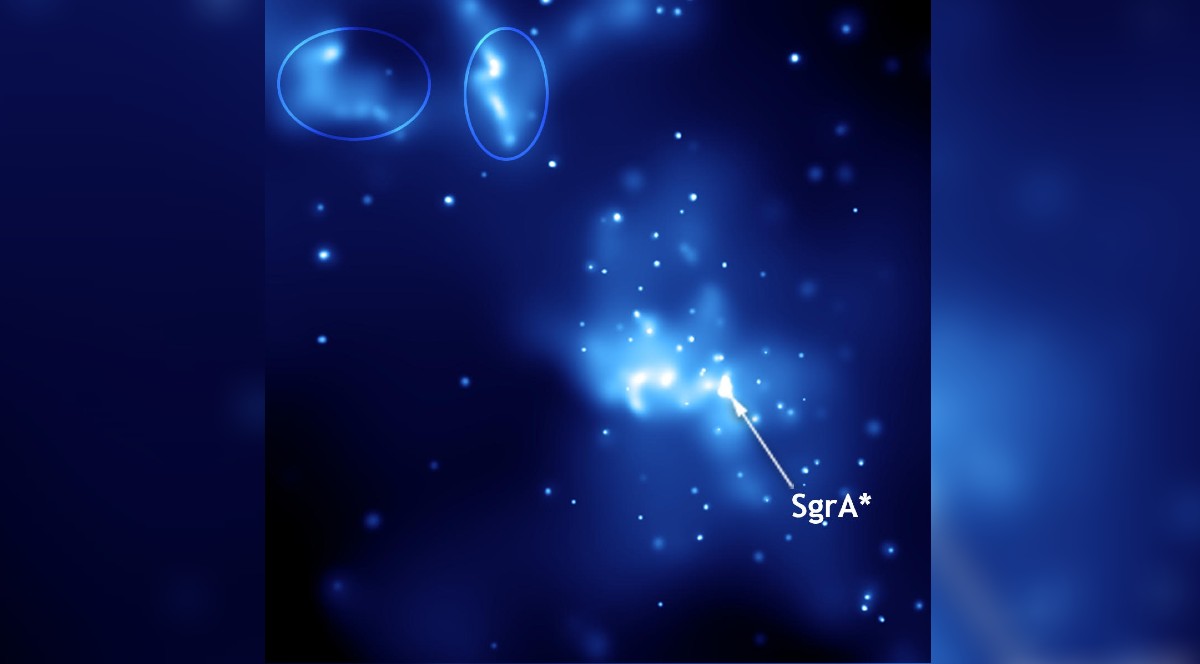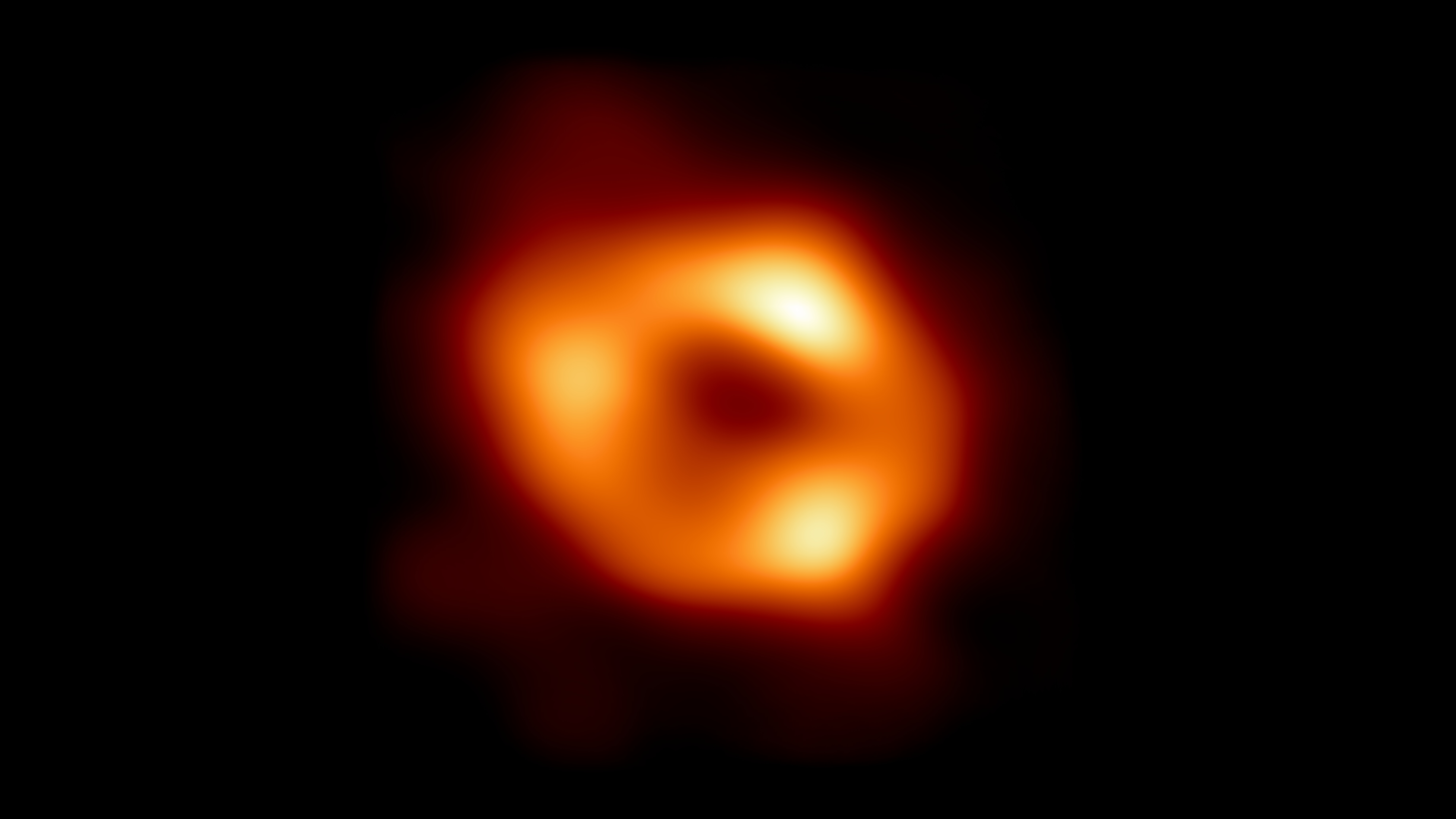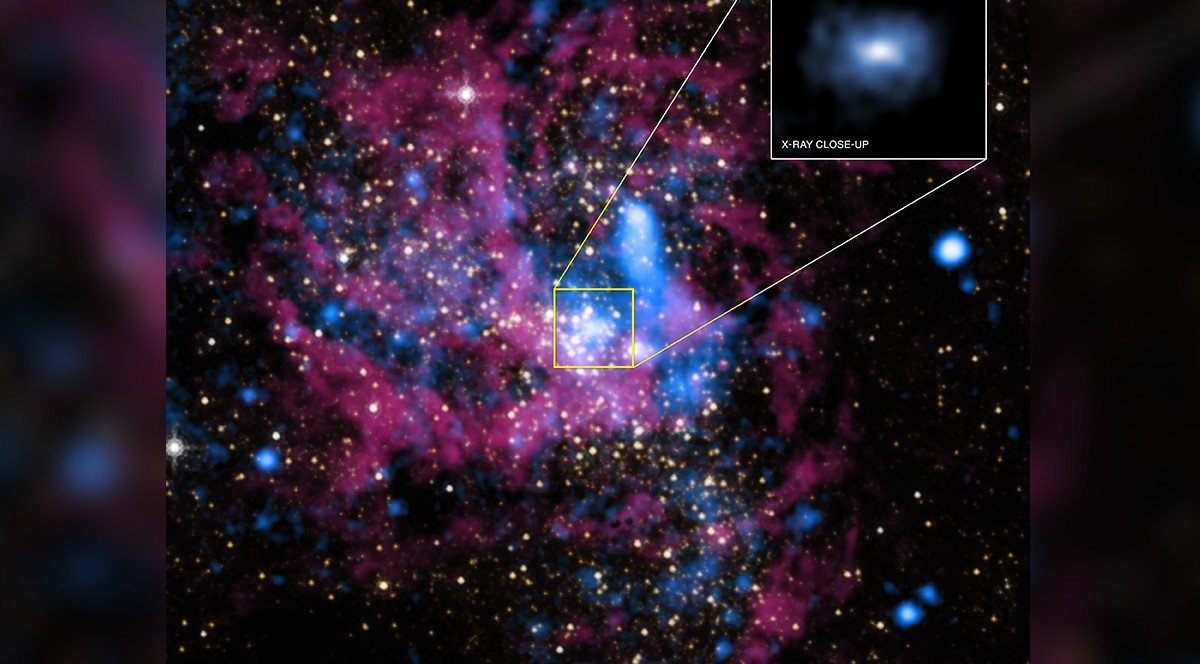Sagittarius A*: The Milky Way's supermassive black hole
Here's what we know so far about Sagittarius A*, a slumbering cosmic titan.

Sagittarius A*, often abbreviated to Sgr A* and pronounced "Sagittarius A star", is a supermassive black hole located at the center of our spiral galaxy, the Milky Way.
Sagittarius A* is mostly dormant and only occasionally absorbs gas or dust, but nonetheless has an estimated mass millions times that of our sun. There are still many mysteries that surround the supermassive black hole, but experts aren't completely in the dark, and further observations from the Event Horizon Telescope promise to reveal more.
Stellar-mass black holes and intermediate-mass black holes form when massive stars cease nuclear fusion and can no longer support themselves against complete gravitational collapse, but the mechanism that forms supermassive black holes like Sagittarius A* isn't clear as there are no stars large enough to directly collapse into a black hole of this size.
Two possible mechanisms include smaller black holes growing to tremendous sizes by swallowing gas and dust from their surroundings or by the hierarchical mergers of smaller black holes.
Sagittarius A*: Size
In 2008, astronomers Reinhard Genzel and Andrea Ghez determined Sagittarius A* to have a mass 4.3 million times that of the sun.
Astronomers have also calculated that the diameter of the Milky Way’s supermassive black hole is around 14.6 million miles (23.5 million kilometers) . This is tiny compared to the Milky Way itself, which is 100,000 light-years wide and 1,000 light-years thick.
Also dwarfing Sagittarius A* is a disk of gas surrounding it that extends for between 5 and 30 light-years occasionally feeding matter to Sagittarius A* causing faint flashes of X-rays. This accretion disc is also connected with X-ray emissions caused by friction driving temperatures in the disc up as high as 18 million degrees Fahrenheit (10 million degrees Celsius).
Breaking space news, the latest updates on rocket launches, skywatching events and more!
Sagittarius A*: Observations
Everything in our 13.6 billion-year-old galaxy orbits Sagittarius A*, including our solar system , which is located 26,000 light-years away.
Black holes are notoriously difficult to spot, usually only inferred by the effects they have on their environment. This is because not only do they not emit light, but black holes also trap photons behind a boundary called the event horizon, making studying them directly in optical light near impossible.
Observing Sagittarius A* from Earth is made even more difficult due to the fact that it is shrouded by a thick screen of intervening dust.
Fortunately, astronomers have developed other ways of gaining insights into Sagittarius A*. For instance, the mass of a central body and its radius can be determined by observing the gravitational influence that it has on the objects that orbit it.
To observe Sagittarius A*, astronomers monitored the star S2 , which orbits Sagittarius A* at a distance of 11 billion miles (18 billion km) and a speed of 17.1 million mph (11.4 kph) . The star also has a highly elliptical 16-year orbit .
Sagittarius A* first image
On May 12, 2022, scientists unveiled our first view of Sagittarius A* in a striking image.
The image was captured using observations of light — the light emitted by matter that's heated up as it hurtles toward the center of Sag A*. This technique gives scientists a view of essentially the shadow of the black hole.
Capturing an image of a black hole is no easy task and requires a global network of observatories that coordinates to act like a telescope the size of Earth — the Event Horizon Telescope (EHT).
Related: Here's How Scientists Turned the World Into a Telescope (to See a Black Hole)
There is still a great deal to learn about Sagittarius A* but the first image of the Milky Way’s central black hole could reveal further secrets held by the cosmic object that has shaped our galaxy.
How was Sagittarius A* discovered?
Theories surrounding Sagittarius A* and its massive occupant date back to the early 1930s when Karl Jansky found a radio signal emitted from a location in the direction of the Sagittarius constellation directed towards the center of the Milky Way.
The galactic center compact radio source Sagittarius A* was then identified in February 1974 by astronomers Bruce Balick and Robert L. Brown. It was during the 1980s that astronomers formulated the idea that the central compact object was likely to be a black hole of a size — until then — unimaginable.
In 1994, Reinhard Genzel and a team from U.C. Berkeley used infrared and submillimetre spectroscopy to infer a compact object with a mass 3 million times that of the sun in the region.
Over the next decade, astronomers continued to rule out other possible candidates for this object — including tightly clustered stars — which strengthened the idea that Sagittarius A* is a supermassive black hole.
Conclusive evidence that the compact object Sagittarius A* is a supermassive black hole was delivered in 2018 when emissions caused by magnetic interactions from hot gas clumps close to the black hole moving at around 30% the speed of light were observed by astronomers using the European Southern Observatory (ESO)'s Very Large Telescope (VLT).
These observations exactly matched theoretical predictions for hot spots orbiting close to a black hole with a mass of four million solar masses.
Will Sagittarius A* swallow the Milky Way?
It's a common misconception that black holes suck in material. Instead, they just capture in their gravity any matter that ventures too close. So, if the sun were replaced by a black hole, Earth would remain stable and safe in its orbit albeit robbed of heat and light.
Many black holes consume material, gas and dust or material ripped from nearby stars, surrounding it in an accretion disk gradually feeding matter to the center.
When this happens the violent conditions in the accretion disk create powerful emissions and jets from an area that is called an active galactic nucleus (AGN). Sagittarius A* isn’t currently swallowing enough matter to power an AGN and a star or other object would have to hit it almost directly to be consumed.
This could change in approximately 4 billion years, however, when the Milky Way collides and merges with Andromeda disturbing stars and providing another, potentially much larger, black hole for stars to stumble into.
Additional resources
For more information about black holes check out "Introduction to Black Hole Physics" by Valeri P. Frolov and "Death by Black Hole - and Other Cosmic Quandaries" by Neil Degrasse Tyson.
Bibliography
- Jones. M. H., Lambourne. R. J. A. & Serjeant. S, "An Introduction to Galaxies and Cosmology", Cambridge University Press, 2015.
- NASA, "Supermassive Black Hole Sagittarius A", August 2013.
- Paul W. Hodge, "Sagittarius A*", Encyclopaedia Britannica, accessed May 2022.
- NASA, "Black Holes", accessed May 2022.
- W. Miller Goss, et al, "The Discovery of Sgr A*", Cornell University, ARxIV, May 2003.
- R. Abuter, et al, "Detection of orbital motions near the last stable circular orbit of the massive black hole SgrA*", Astronomy & Astrophysics, Volume 618, October 2018.
- Ru-Sen Lu, et al, "Detection of intrinsic source structure at ~3 Schwarzschild radii with Millimeter-VLBI observations of SAGITTARIUS A*", Cornell University, ARxIV, May 2018.
- Encyclopaedia Britannica, "Karl Jansky", accessed May 2022.
- Hubblesite, "How do black holes grow?", accessed May 2022.
- Fraser Cain, "Will our black hole eat the Milky Way?", Universe Today, August 2016.

Robert Lea is a science journalist in the U.K. whose articles have been published in Physics World, New Scientist, Astronomy Magazine, All About Space, Newsweek and ZME Science. He also writes about science communication for Elsevier and the European Journal of Physics. Rob holds a bachelor of science degree in physics and astronomy from the U.K.’s Open University. Follow him on Twitter @sciencef1rst.



